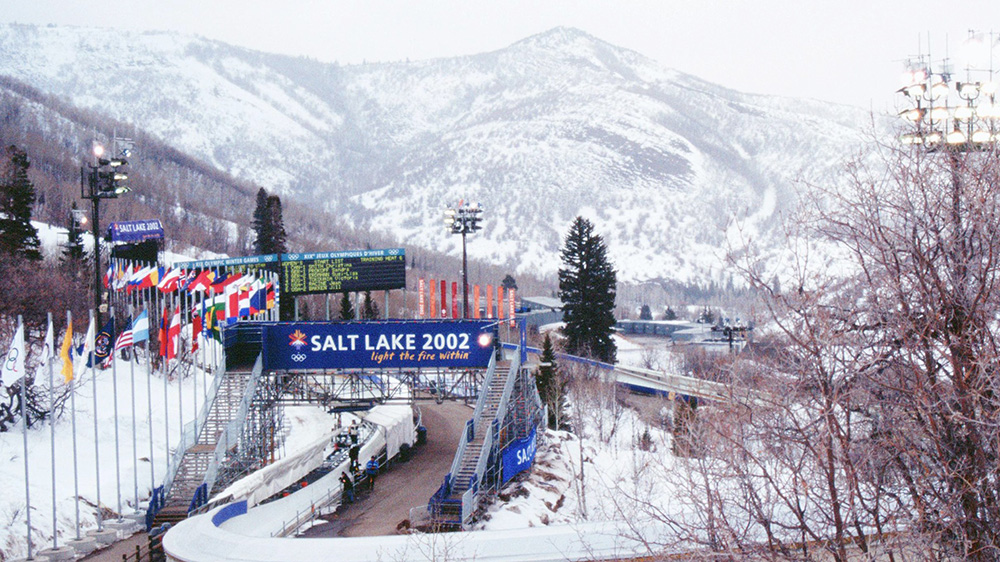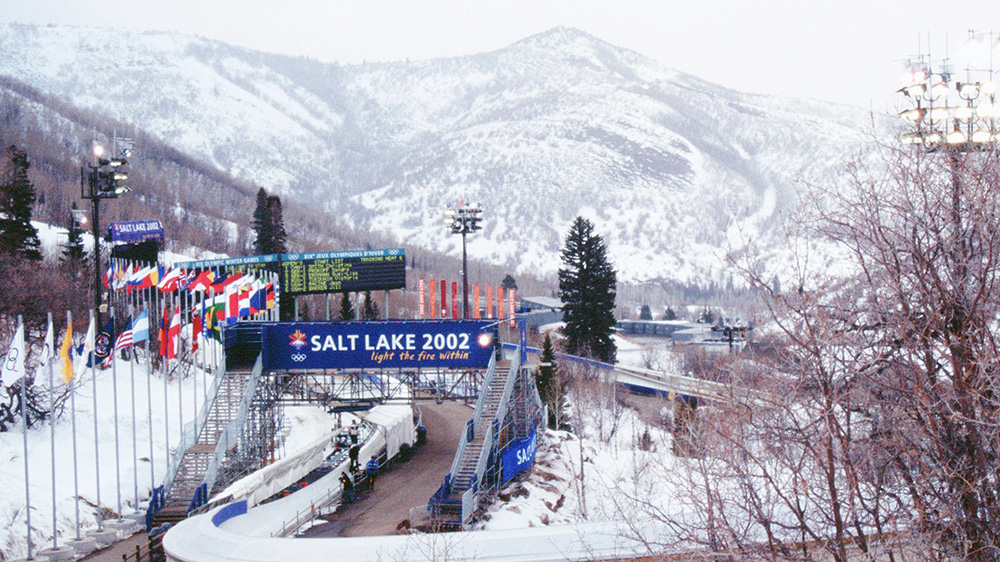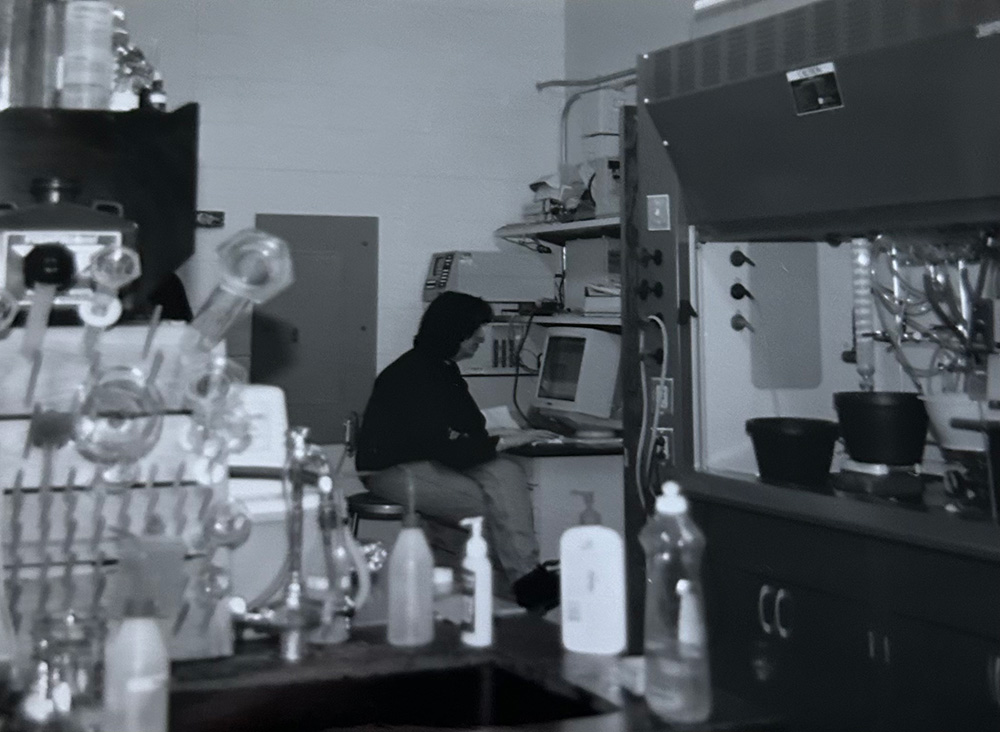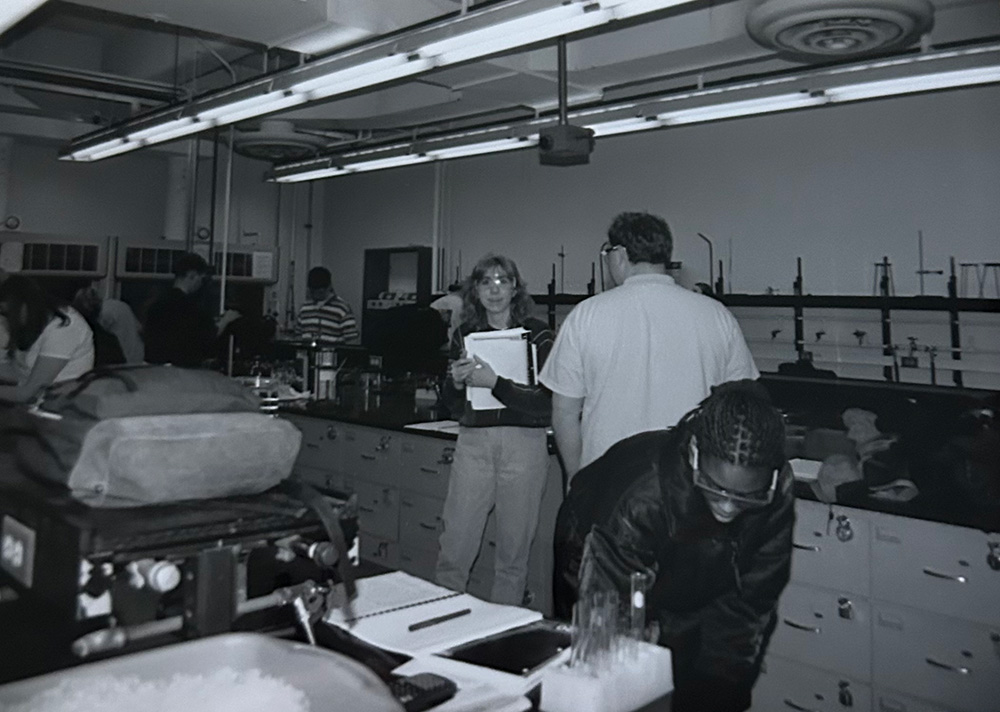
In 2002, the Salt Lake Winter Olympics played a dominating role in the first three months of the calendar year in the life of the Utah Chemistry Department. While skiing competitions took place in the mountains around Park City and skating events took place beyond West Valley, the colorful parades of the opening and closing ceremonies took place in the renovated Rice-Eccles “Olympic” Stadium a few feet south of the Henry Eyring Chemistry Building.

Many University of Utah students, faculty, and staff volunteered for temporary ushering assignments which helped make the Olympic Experience a resounding success for Utah. We seemed to see windbreakers, hats, and other paraphernalia bearing Olympic symbols. Security concerns were sometimes intrusive, but Chair Peter Armentrout correctly declared “having the Olympics in our backyard was the experience of a lifetime.”
On the science scene, Joel Miller’s “Light-Tunable Plastic Magnet,” Matt Sigman’s “New Catalytic Reaction,” and Henry White’s “Reinvention of the Battery” all made positive technical news.
Additions to the faculty included Peter Flynn (nuclear magnetic resonance) coming from the University of Pennsylvania, Janis Louie (inorganic and organic chemistry) from CalTech., and Jon D. Rainier (organic synthesis) from the University of Arizona.
The Department regretted the loss arising from Wes Bentrude changing to Emeritus status, Tom Beebe moving permanently to the University of Delaware, and Fred West moving to the University of Alberta. On February 1, 2002, Distinguished Professor David M. Grant began phased retirement.
Visibility of the Department in the international chemical community was greatly enhanced by Peter Stang becoming Editor of the Journal of the American Chemical Society with Henry White as one of his Associate Editors.
Also in 2002, Dale Poulter became the Editor of the Journal of Organic Chemistry with Cindy Burrows as an Associate Editor, and Joel Harris was reappointed as the Editor-in-Chief of Applied Spectroscopy. There is no doubt that some of our best chemistry classroom teachers are made less available to our undergraduate chemistry students by this exemplary service by some of our faculty to the chemical profession. However, the quality of new research being done in the department by undergraduates, graduate students, and postdocs is greatly enhanced by having many notable chemists visiting the University of Utah editorial offices in person or electronically and keeping some of our star Utah chemistry faculty/editors apprised of the hottest new developments in chemistry. One of the key ingredients required to make Utah a hub for editing great scientific periodicals continues to be gifted reader-writers- word-processors who cheerfully convert sloppy English into scientific literature. Charlotte Sauer, Julie Westwood, … are a few of the stars at Utah who have successfully practiced this demanding witchcraft. They were or are paid by the journal in question with salaries passed through the University by the journal business offices.
 |
 |
On October 5, 2002, Professor Stang was inducted into membership in the American Academy of Arts and Sciences at a meeting of the Academy in Cambridge, Massachusetts. This is an honor shared by other notables such as George Washington, Benjamin Franklin, Thomas Jefferson, Alexander Graham Bell, and Albert Einstein.
Peter Armentrout continued as Chair in 2003. Thus Peter A. was running the show when Ilya Zharov, a Ukrainian doing postdoctoral research in Josef Michl’s lab, accepted an Assistant Professorship in Chemistry at Utah.
In January 2003, Gretchen J. Domek was identified as a prestigious Rhodes Scholar bound for Oxford University. During her time as an undergraduate at Utah, Gretchen had done research in the Biology Lab of Professor David Goldenberg, had particularly enjoyed course work with Professors Rick Ernst and Joel Harris, and had been a member of the Utah intercollegiate cross country ski team for two years.
